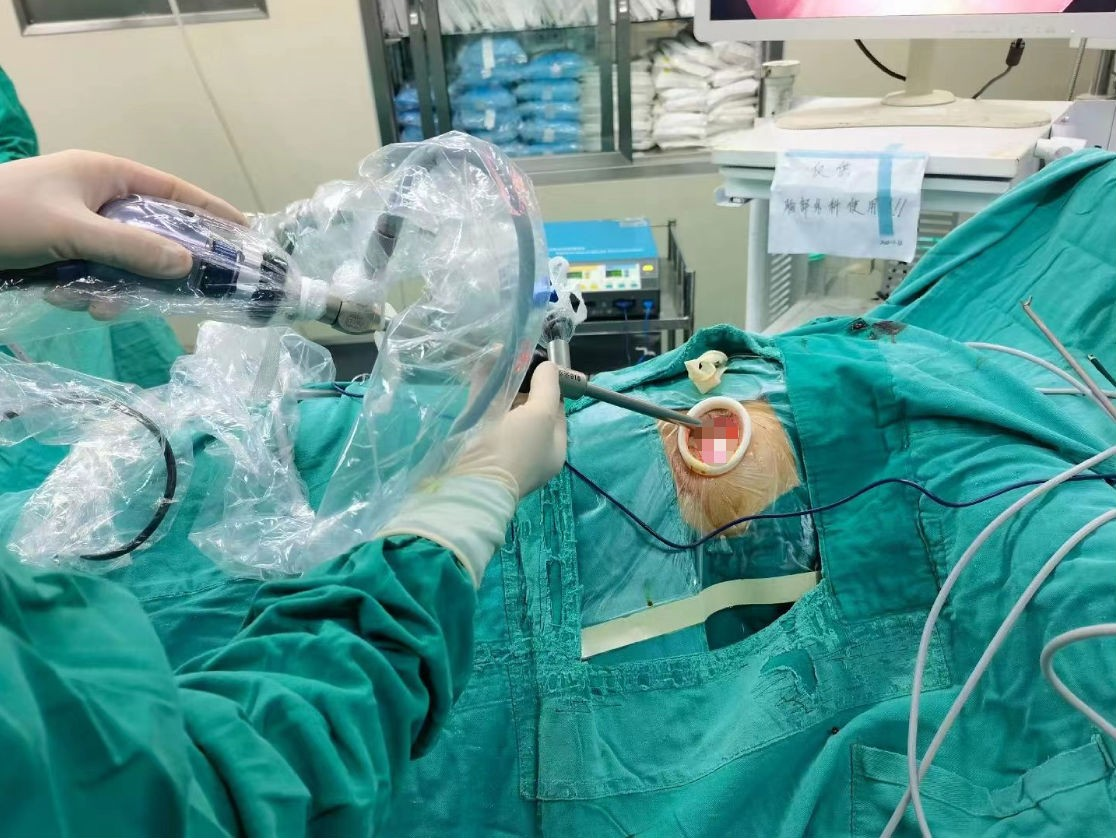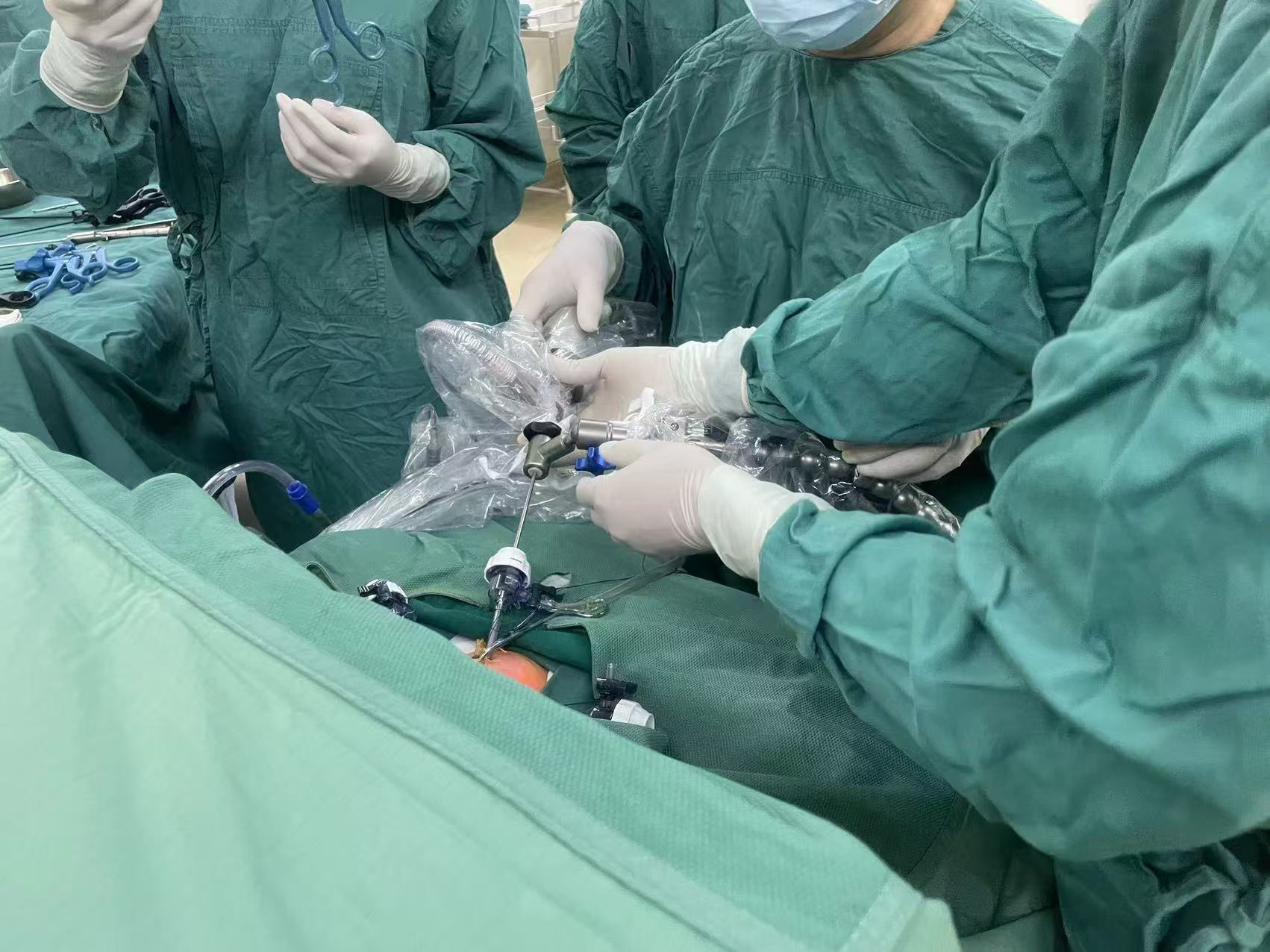Application of the Snake-like Pneumatic arm in Single-Operator Thoracic Surgery
2024-09-03Application of the Snake-like Pneumatic arm in Single-Operator Thoracic Surgery
Our company’s snake-like pneumatic arm was utilized in a single-operator, single-port thoracoscopic lung lobectomy for a patient with a pulmonary nodule.

The patient presented to the hospital after discovering a lung nodule during a routine physical examination. Upon admission, the hospital’s chief physician team developed a comprehensive diagnostic and treatment plan. CT scans confirmed that the nodule, approximately 2 cm in size, was located in the middle lobe of the right lung. Considering the potential malignancy of the nodule, the expert team planned to perform a single-port thoracoscopic lobectomy. Given the stability and ease of manipulation provided by the snake-like pneumatic arm, the team decided to utilize it for the procedure. The surgerywas successfully completed, and the patient recovered well.
Typically, single-port thoracoscopic surgeries require the cooperation of at least two operators: one to handle the camera and another to perform the surgery. The introduction of the snake-like pneumatic arm has significantly facilitated minimally invasive thoracic surgeries, making single-operator single-port thoracoscopic surgery a reality. The benefits of using t pneumatic arm include resolving the coordination issues between the surgeon and the camera handler, stabilizing the camera to prevent image instability, and freeing up space for the surgeon. This reduces manpower requirements, increases operational efficiency, and lessens the physical strain on the endoscope handler. The effectiveness of this technology during surgery can be reviewed in the accompanying images.

In summary,pneumatic arm operated directly by the surgeon, can provides optimal surgical visualization according to the surgeon's needs. The mechanical arm, which replaces manual handling, eliminates angle restrictions and occupies minimal space, thus offering the best possible view and space for the endoscope. Additionally, the pneumatic arm moves with greater agility and stability, maintaining camera steadiness and enhancing the smoothness of the procedure.






